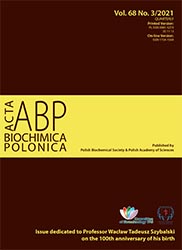Activation of epithelial-mesenchymal transition process during breast cancer progression – the impact of molecular subtype and stromal composition
Abstract
Breast cancer (BC) is a heterogeneous disease with different molecular subtypes, which can be defined by oestrogen (ER), progesterone (PR) and human epidermal growth factor (HER2) receptors’ status as luminal, HER2+ and triple negative (TNBC). Molecular subtypes also differ in their epithelial-mesenchymal phenotype, which might be related to their aggressiveness, as activation of the epithelial-mesenchymal transition (EMT) is linked with increased ability of cancer cells to survive and metastasize. Nevertheless, the reverse process of mesenchymal-epithelial transition was shown to be required to sustain metastatic colonization. In this study we aimed to analyse activation of the EMT process in primary tumours (PT), which have (N+) or have not (N–) colonized the lymph nodes, as well as the lymph nodes metastases (LNM) themselves in 88 BC patients. We showed that luminal N– PT have the lowest activation of the EMT process (27%), in comparison to N+ PT (48%, p=0.06). On the other hand, TNBC do not show statistically significant EMT activation at the stage before lymph colonization (N–, 83%) and after colonization of the lymph nodes (N+, 63%, p=0.58). TNBC are also the least plastic (unable to change the EMT phenotype) in terms of turning EMT on or off between matched PT and LNM (0% EMT plasticity in TNBC vs 36% plasticity in luminal tumours). Moreover, in TNBC activation of EMT was correlated with increased cell division rate of the PT– in mesenchymal TNBC PT median Ki-67 was 45% in comparison to 10% in epithelial TNBC PT (p=0.002), whereas in PT of luminal subtypes Ki-67 did not differ between epithelial and mesenchymal phenotypes. Profiling of immunotranscriptome of epithelial and mesenchymal luminal BC with Nanostring technology revealed that N– PT with epithelial phenotype were enriched in inflammatory response signatures, whereas N+ mesenchymal cancers showed elevated MHC class II antigen presentation. Overall, activation of EMT changes during cancer progression and metastatic colonization of the lymph nodes depending on the PT molecular subtype and is related to differences in stromal signatures. Activation of EMT is associated with colonizing phenotype in luminal PT and proliferative phenotype of TNBC.
Acta Biochimica Polonica is an OpenAccess quarterly and publishes four issues a year. All contents are distributed under the Creative Commons Attribution-ShareAlike 4.0 International (CC BY 4.0) license. Everybody may use the content following terms: Attribution — You must give appropriate credit, provide a link to the license, and indicate if changes were made. You may do so in any reasonable manner, but not in any way that suggests the licensor endorses you or your use.
Copyright for all published papers © stays with the authors.
Copyright for the journal: © Polish Biochemical Society.


